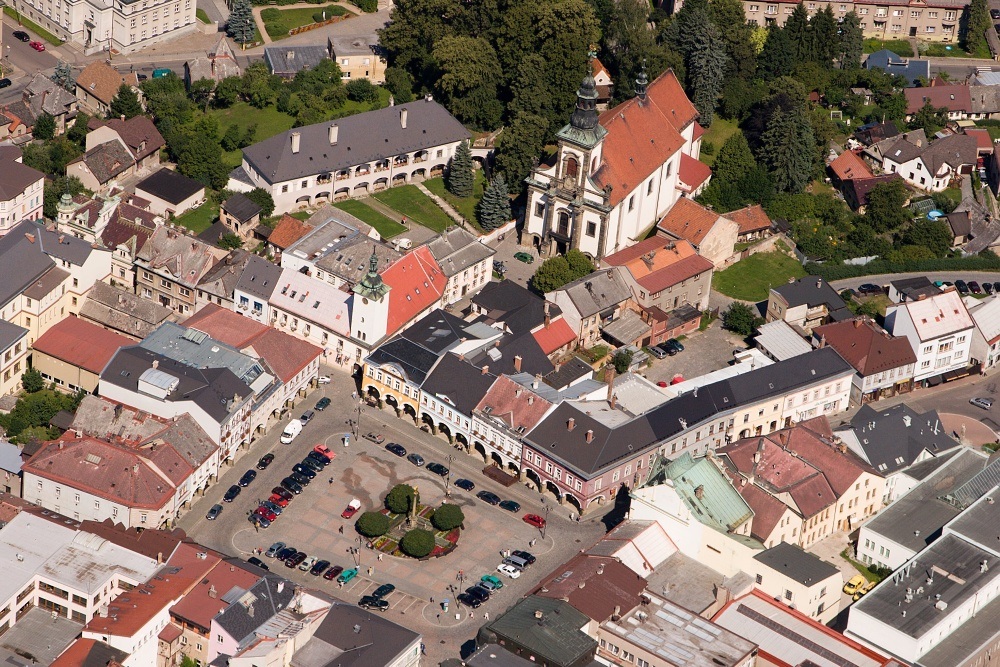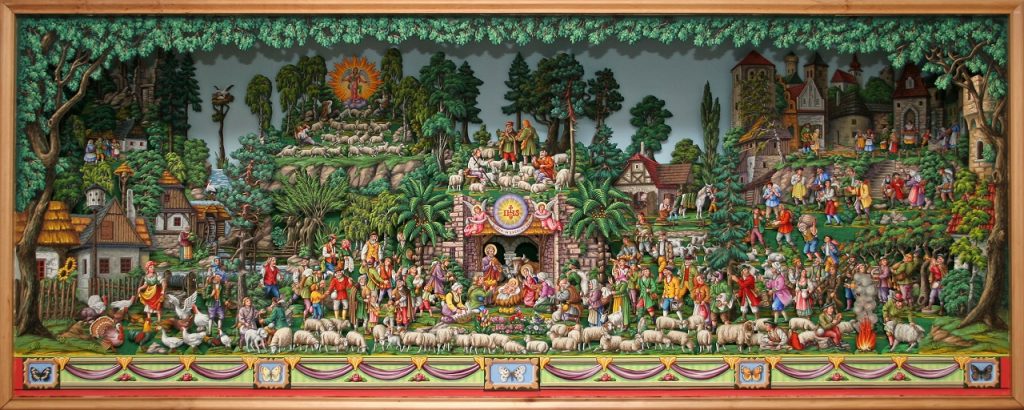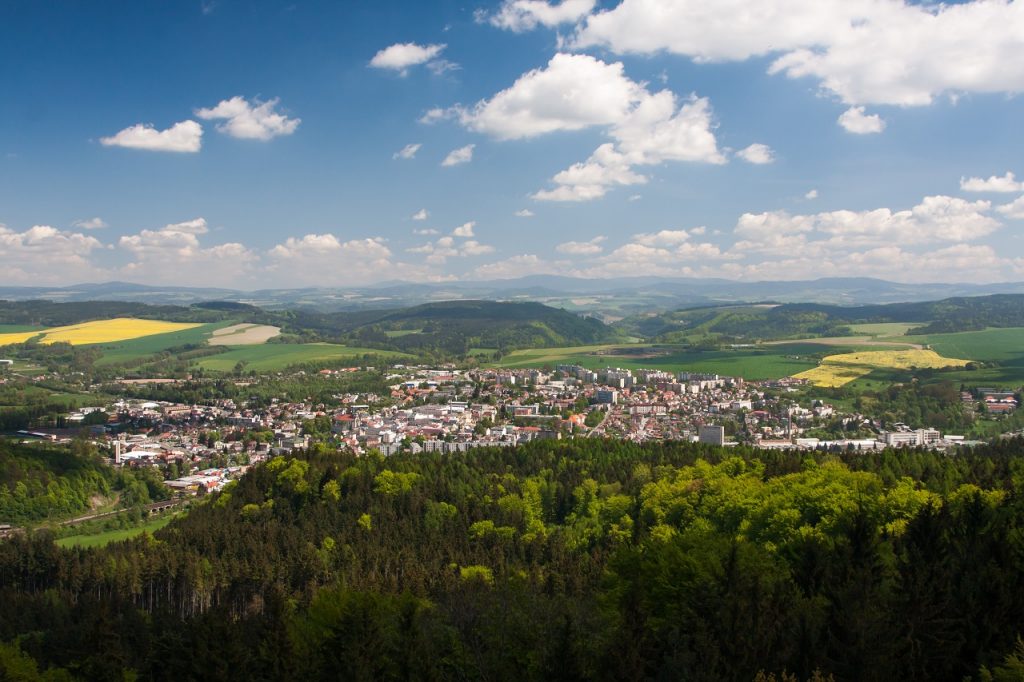Ústí nad Orlicí is a town in the region known as “Podorlicko”. It is situated in a picturesque valley at the confluence of two rivers – Tichá Orlice and Třebovka – at the altitude of 350 m above sea-level, 150 km to the east of Prague. Through a first-class road, the town is connected to the main road network between Bohemia and Moravia. It also lies on the central railway line Prague–Olomouc and Prague–Brno, which contributes to its good availability in terms of public transport. This means there are numerous opportunities for further development of industry and services, which in turns creates jobs for the citizens.
Currently, the population is roughly 15 000 people.
The town’s historical roots reach as far as to the second half of the 13th century. The inhabitants earned their living mostly through agriculture and weaving, with the latter having gradually prevailed. Over time, the weaver town established itself as a significant focal point of the textile industry. Today there are several middle-sized production facilities – both Czech and with foreign participation.
Ústí nad Orlicí is also a town of culture and sports. Significant events include international competitions and races, such as the Kocian Violin Competition, the Heran Violoncello Competition, the uphill car race “Ústecká 21”, the ski race for youth “Skiinterkriterium” or the gravity racer competition.
Furthermore, the town is the venue of theatre, movie and dance festivals. Young reciters and students’ theatre ensembles meet here on a regular basis. Another long-established tradition and occasion for coming together of all generations is the one-week festival “Město v pohybu” (roughly “Town in Motion”), which includes sports competitions and a varied cultural programme. Ústí nad Orlicí is a district town with kindergartens, elementary and high schools and a network of public institutions. The town also provides high-quality social services on multiple levels.




Life in the Town
The town, including suburbs, has 8 kindergartens, 4 elementary schools, a school of arts, a children and youth centre and a special school. High schoolers can choose from three high schools and one grammar school. Elderly people may use the services of the retirement home and the social care centre. Cultural life in the town is shaped by the contributory organisation Klubcentrum. Furthermore, there is the town library (serving the surrounding municipalities as well) and the town museum. On top of all that, the citizens also have basic health care at their disposal, which is supplemented by the hospital services. Job opportunities can be found in the local middle-sized enterprises, businesses with foreign participation or in services and state institutions, which have their seats or offices in the town.
Cultural Events
The town is closely linked with many traditions, particularly with painting and building of nativity scenes or with the musical heritage of Jaroslav Kocian and the Cecilian Musical Society. Some of the significant sights are the functionalist Roškot Theatre (national cultural monument), the Art Nouveau Hernych Villa or the baroque Assumption of Virgin Mary Church, next to which grew a new park with the unique St. John Paul II Meditation Chapel. The park facility is suited for silent contemplation or rest and became a peaceful oasis in the busy town centre.

Active Relaxation
Ústí nad Orlicí is the regional hub for cycling routes, offering the visitors a plenitude of cycling activities or hikes in the surroundings. The visitors can set out to see observation towers, castle ruins or aristocratic seats. Unique bike paths are well-suited not only for cycling, but also for inline skating. Children can take the educational trail in the park Wolkerovo údolí or try out various play elements on several children’s playgrounds. For water sports fans and adrenalin lovers, there is the active tourism resort in Cakle near the Tichá Orlice river. Among other things, you can sail down the river in a rented canoe or test your courage while surmounting the climbing wall with a via ferrata.
To enjoy a well-earned reward after some exercise, you can visit the indoor swimming pool with salt water, a small spa facility and a sauna. Alternatively, there is the outdoor swimming pool, which is part of the larger multifunctional sports centre with tennis and volleyball courts, a football and athletic stadium or a minigolf facility.
Events
There is a plenty of cultural and sports events in the town. In spring, you can listen to the tones of classical music during the festival “Kocianovo Ústí”. In October, you are invited to the St. Cecilia Festival of Spiritual Music. In May, the town becomes the venue of the international Kocian Violin Competition and in June, there is the one-week festival “Město v pohybu” (roughly “Town in Motion”). There are also film or theatre festivals and recitation or dancing competitions with regional as well as national participation. Popular events include the summer fairground and the winter festivities “Ústecký advent”.
A long-established tradition have the international uphill car race known as “Ústecká 21”, basketball and chess tournaments, karate competitions or the national athletic meeting.


Ústí nad Orlicí is situated at the foothills of the Eagle Mountains (Orlické hory) at the confluence of the Tichá Orlice and Třebovka rivers. Right here where one river flows into the other, a small colony, originally called “Oustí” (roughly “River Mouth”), was founded at the turn of the 12th and 13th century.
The origins of Ústí nad Orlicí are closely linked to the culminating colonisation process in the second half of the 13th century, which was carried out by the lords of Drnholec on the authority of rulers Wenceslaus I and Přemysl Ottokar II. The new settlement was founded on a promontory above the original colony, which is obvious to this very day from the nearly quadratic shape of the town square and from the structure of the town centre. The liege town was named after one of the colonizers, Vilém of Drnholec, as “Wilhelmswerd” (German for “William’s Promontory”).
The subsequent development was closely linked with the newly established estate with the near Lanšperk castle as its administrative centre. After the colonisation of the whole region had been completed, the estate was returned to the royal crown. The earliest written record of Ústí nad Orlicí dates back to 1285, in which year the king Wenceslaus II conceded the estate to his stepfather Zavis of Falkenstein. However, after Zavis’ execution, the ruler donated the west part of the Lanšperk estate (an area near Ústí nad Orlicí and Česká Třebová) to the newly founded Cistercian monastery in Zbraslav near Prague in 1292. Due to large distance, difficult management and frequent attacks by robber barons, the monastery decided to sell the estate to the Litomyšl episcopate in 1358. In the course of the centuries, the estate had multiple owners. This was caused by sales, politics of marriage or relocation of the administrative centre. Among others, the estate was owned by dynasty families such as the Kostka of Postupice, the House of Pernstein, the Bohdanecký of Hodkov or the House of Liechtenstein. Each ruler bestowed certain privileges upon the town, which contributed to its development. Supported was beer brewing (1499) and the guild production, especially cloth-making and drapery. In 1498 and 1705, the town fell victim to two big fires that destroyed precious historical documents and the original wooden houses, which were replaced by brick-built houses (including the new town hall and houses with arcades) in the 18th century. Between 1851 and 1869, the town was the seat of the district authorities, which was later abolished and Ústí fell under the district of Lanškroun.
The last quarter of the 18th century saw a dispute between the citizens of Ústí and the authorities in Lanškroun concerning the town administration. In 1795, Ústí nad Orlicí was declared a “protected municipality”, which granted its citizens greater autonomy.
A huge impact on the life in the town had the Munich Agreement from September 1938, which resulted in Ústí being suddenly surrounded with new borders on three sides (except for the west). The subsequent political and administrative development affected the life in the town once again.
Ústí nad Orlicí regained the district town status in 1960. However, this administrative unit was finally abolished in 2003.
Since the town has always been located in a not particularly fertile area, the inhabitants had to focus mainly on crafts, more specifically on home weaving. A breakthrough came with the construction of the railway line from Olomouc to Prague between 1843 and 1845. Moreover, the railway line to Kłodzko was finished in 1874. Over time, several factories got established in the town, particularly in the cotton wool industry. After the traditional guild production system disappeared, the railway transport allowed the textile industry to sprout to such an extent that Ústí nad Orlicí got nicknamed the “East Bohemian Manchester” in the early 20th century. The traditional textile industry, which unfortunately vanished during the 1990s, was also accompanied by the textile machine industry and research facilities.
The economic growth in the late 19th century was conducive to the development of cultural traditions and associations. However, the roots of this tendency can be seen already in the medieval Literate Brotherhood associated with the local church or in the foundation of the Cecilian Musical Society in 1803.
Apart from the rich musical heritage, we should also mention the tradition of painting of nativity scenes and the activities of the local associations. The current population (including surrounding municipalities) is roughly 15 000 inhabitants. Ústí nad Orlicí is now a municipality with extended powers for the entire region.